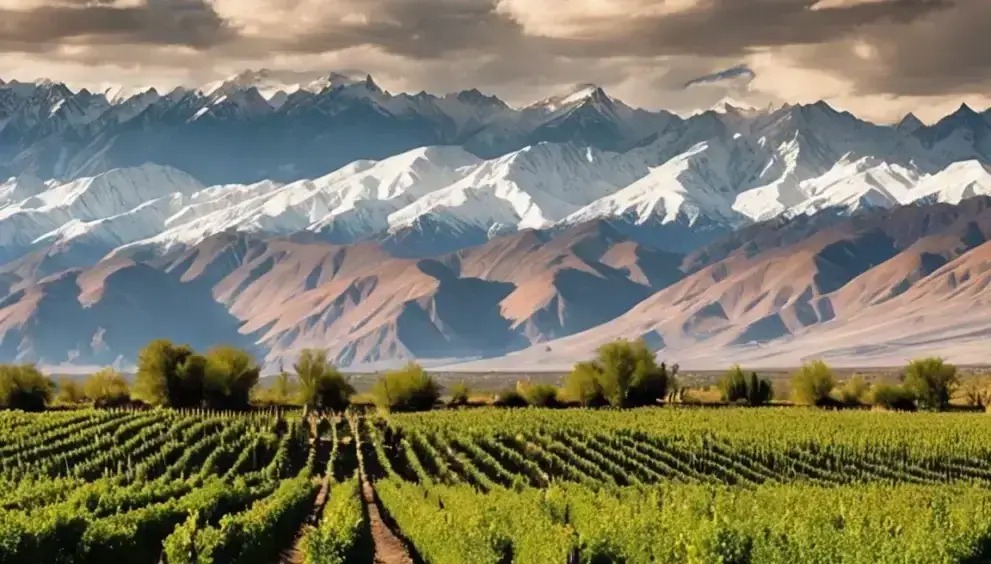
Subscribe to our newsletter
How to Spot the Next Big Wine Region
Emerging Markets to Watch in 2025
1/16/20253 min read


In 2025, the world of fine wine investment is expanding beyond the traditional strongholds of Bordeaux, Burgundy, and Napa Valley. As collectors and investors search for new opportunities, emerging wine regions are gaining recognition for their exceptional quality and investment potential. Identifying these rising stars early can offer significant rewards for those willing to diversify their portfolios and explore uncharted territories.
In this edition, we’ll explore the key emerging wine regions to watch in 2025, focusing on why they are attracting attention from collectors and investors alike.
Why Emerging Regions Matter for Wine Investment
Emerging wine regions offer several advantages for investors looking to diversify and maximise returns. Many of these areas are still relatively undiscovered, meaning their wines often come at a more accessible price point while offering excellent quality. As global interest in fine wine continues to grow, the demand for wines from these regions is expected to rise, making them prime candidates for long-term appreciation.
By investing early in emerging regions, you can capitalise on:
Lower entry costs: Wines from these regions tend to be more affordable, providing room for value appreciation as their reputation grows.
High-quality production: Many emerging regions have unique terroirs and innovative winemakers producing wines that rival those from more established areas.
Diversification opportunities: Adding wines from new regions can balance your portfolio and reduce risk by spreading your investments across multiple markets.
Top Emerging Wine Regions to Watch in 2025
1. Stellenbosch, South Africa
Stellenbosch is fast becoming one of the most exciting wine regions in the world. Known for its bold red wines, particularly Cabernet Sauvignon and Syrah, the region offers a combination of high-altitude vineyards and innovative winemaking techniques. The Mediterranean climate and diverse soils create ideal conditions for growing premium grapes. Leading producers like Kanonkop, DeMorgenzon, and Rust en Vrede are gaining international recognition, and wines from this region are already showing strong potential for long-term appreciation.
Why Invest: Stellenbosch wines offer outstanding quality at relatively affordable prices compared to their European counterparts. The region’s growing reputation and critical acclaim make it a key area to watch.
2. Uco Valley, Argentina
While Mendoza is already a well-known wine region, the Uco Valley within Mendoza is particularly noteworthy for producing high-altitude Malbecs that are gaining global acclaim. Wines from the Uco Valley are known for their purity, minerality, and elegance, reflecting the unique terroir of the Andes foothills. Producers like Catena Zapata and Zuccardi are leading the charge, with their wines consistently receiving high scores from critics.
Why Invest: Uco Valley wines are becoming highly sought after, especially in key export markets like the US and Europe. The combination of high-altitude viticulture and innovative winemaking makes these wines ideal for collectors looking to diversify their portfolios with New World wines.
3. Douro Valley, Portugal
The Douro Valley is historically known for its production of Port wine, but in recent years, it has emerged as a producer of exceptional still red wines. Indigenous grape varieties such as Touriga Nacional and Tinta Roriz thrive in the region’s steep, terraced vineyards. Wineries like Quinta do Crasto and Niepoort are producing world-class reds that are attracting the attention of collectors and investors alike.
Why Invest: Douro’s still wines are relatively undervalued compared to their quality, making them a prime target for investment. As the region continues to gain recognition for its non-Port wines, demand is expected to rise, driving up prices.
4. Alentejo, Portugal
Alentejo is often overshadowed by Portugal’s more famous wine regions, but it’s increasingly becoming known for its rich, full-bodied reds made from indigenous grape varieties like Aragonez and Alicante Bouschet. With a focus on sustainable viticulture and organic practices, producers in this region are gaining attention for their commitment to quality and environmental responsibility.
Why Invest: Alentejo offers strong value for money, with wines that often overdeliver in terms of quality relative to price. As global awareness of this region grows, so too will the investment potential of its wines.
What to Look for When Investing in Emerging Regions
When investing in wines from emerging regions, there are a few key factors to keep in mind:
Producer Reputation: Look for producers with a track record of excellence, as their wines are more likely to appreciate in value.
Critical Acclaim: Wines that receive high scores from renowned critics tend to see increased demand and price appreciation.
Market Trends: Pay attention to global market trends and consumer preferences. Emerging regions often benefit from shifting tastes and growing interest in sustainable practices.
Conclusion: The Future of Wine Investment is Global
The wine world is vast, and emerging regions are becoming increasingly important for collectors and investors who want to diversify and stay ahead of market trends. By keeping an eye on up-and-coming regions like Stellenbosch, Uco Valley, Douro, and Alentejo, you can unlock new opportunities for both enjoyment and financial gain.
